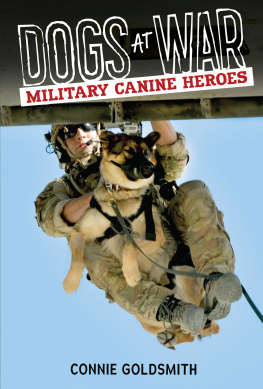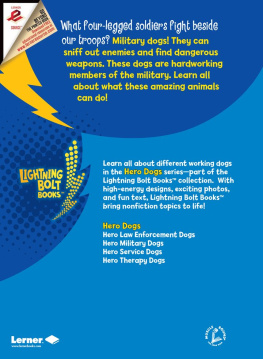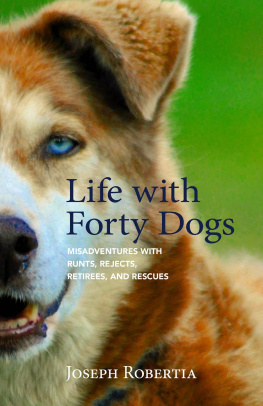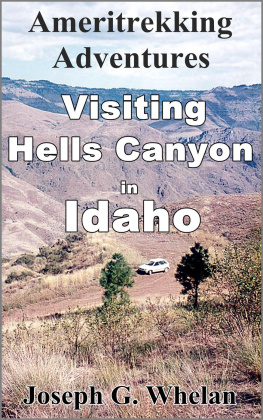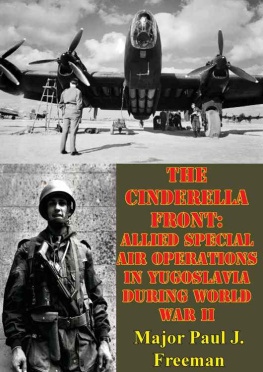
This edition is published by PICKLE PARTNERS PUBLISHINGwww.picklepartnerspublishing.com
To join our mailing list for new titles or for issues with our books picklepublishing@gmail.com
Or on Facebook
Text originally published in 2001 under the same title.
Pickle Partners Publishing 2014, all rights reserved. No part of this publication may be reproduced, stored in a retrieval system or transmitted by any means, electrical, mechanical or otherwise without the written permission of the copyright holder.
Publishers Note
Although in most cases we have retained the Authors original spelling and grammar to authentically reproduce the work of the Author and the original intent of such material, some additional notes and clarifications have been added for the modern readers benefit.
We have also made every effort to include all maps and illustrations of the original edition the limitations of formatting do not allow of including larger maps, we will upload as many of these maps as possible.
CRY HAVOC AND LET SLIP THE DOGS OF WAR SPECIAL OPERATIONS FORCES AND THE MILITARY WORKING DOG
BY
Major Joseph F. Whelan U.S. Army Special Forces
TABLE OF CONTENTS
Contents
TABLE OF CONTENTS
REQUEST FROM THE PUBLISHER
Preface
My interest in dogs and the U.S. Military Working Dog Program is purely academic. I do not own a dog nor have a particular affinity towards dogs. However, through research, I discovered what many have found before me technology has not erased military employment opportunities for dogs in the 21 st Century. In fact, military working dogs are particularly relevant to U.S. Special Operations Forces.
I would like to acknowledge the assistance of my wife who served as my best editor.
Abstract
Cry Havoc and Let Slip the Dogs of War Special Operations and the Military Working Dog by Major Joe Whelan, U.S. Army Special Forces.
This paper examines the potential for military working dogs to support Special Operations Forces (SOF). Modern technology has not eliminated the operational prospective for the military employment of dogs. Canine olfactory superiority, advanced hearing, and ability to detect movement offer significant military employment potential. Military working dogs can be trained for scouting, patrolling, building and ship searches, countermine, counterdrug and tracking. When used properly, dogs are an inexpensive and efficient force multiplier.
Qualitative research using correlational data comprises the monograph's methodology. Military working dog capabilities, limitations, and historical employment will be discussed and then compared to Special Operation Forces principal missions and collateral activities.
The conclusion demonstrates that dogs have a wider role to perform in today's operational environment and that military working dogs can augment and complement SOF operations. Nearly every SOF mission can benefit from the inclusion of dogs particularly in support of Stability and Support Operations conducted in developing countries that cannot employ or sustain complex and technologically sophisticated equipment. Military working dogs are a proven, low technology, combat and combat support capability and may have a future role in support of Special Operations Forces.
Introduction
Cry, Havoc! and let slip the dogs of war. William Shakespeare Julius Caesar'
Dogs have competently served military ventures for over 2500 years. At one time during WWII, there were nearly 15,000 trained military working dogs in the U.S. inventory serving a broad range of duties from patrolling to delivering messages. Today the U.S. military maintains fewer than 1,400 dogs {1} . Although historic declines in dog utilization are apparent, today's operational environment clearly begs for an enhanced military working dog capabilityparticularly with U.S. Special Operations forces.
Technology preempted the decline of military working dog usage. During the Cold War, the Warsaw Pact's numerical equipment superiority encouraged the development of equipment and doctrine designed to intercept and kill the enemy in depth in a high intensity conflict. Accordingly, the U.S. military focused on sophisticated technological solutions. The dog as a low-technology system saw little development during this period. As a result, military working dogs had limited use in an era of bipolar superpowers and nuclear brinkmanship.
However, since the disintegration of the Soviet Union and the end of the Cold War, the world has profoundly changed. The facts and assumptions that dictated U.S. doctrine have changed. The growth of free markets and the globalization afforded by information technology has created a different operational environment. Economic integration and political fragmentation, most noticeable in the last fifteen years, continue to shape and define the geostrategic landscape of the 21st Century. The tensions associated with these newfound freedoms and shifting demographics have fostered uncertainty and instability in the emerging multi-polar world.
John F. Kennedy said it best in his 1963 State of the Union address, The mere absence of war is not peace. With the end of the cold war afforded by the dissolution of the Soviet Union and the Warsaw Pact, the nature of conflict has changed. The physical distance between combatants and non-combatants has closed and it is becoming increasingly difficult to differentiate between belligerents and friends. Some argue that general war has become too costly in terms of casualties and equipment and a new fuzzy war is emerging. Doctrinally, this fuzzy war is referred to as Military Operations Other Than War (MOOTW) or Stability and Support Operations (SASO). As innocuous as these titles appear, these operations are in fact rift with hazards.
Currently some 37,400 United Nations military and civilian personnel, provided by eighty-nine countries, are engaged in fifteen operations around the world {2} The United States participates in many of these stability and support operations, which are characterized not by the overwhelming lethality of modern weapon systems, but by subtlety and finesse. U.S. soldiers work amongst indigenous populations and the traditional boundaries that once clearly identified our adversaries are now blurred.
In MOOTW, traditional doctrine and advanced technology will not provide all of the dominance previously enjoyed by the U.S. military. Advanced technology is becoming more accessible as many of our enemies are closing the technology gap and finding solutions to mitigate U.S. lethality {3} . Conflicts that attempt to defeat American national will through low technology means can expose the U.S. military's Achilles heel. {4} Tactically, adversaries may exploit low technology means to negate the U.S. high technology advantage. Examples of this technique include using obscurants to defeat laser-guided weapons, minefields to counter superior mobility, human shields to protect combatants or key military locations, and fighting in urban areas.
The Russian involvement in Chechnya demonstrates the difficulties a technically sophisticated force may face while fighting in urban terrain. The Russian army required tens of thousands of soldiers to defeat Chechnyan rebels numbering in the hundreds. The complexity of the urban environment coupled with the Chechnyan's mastery of the cities and their willingness to fight amongst the people marginalized the Russian military superiority. Ultimately, with blatant disregard for civilian casualties and indiscriminate destruction, the Russians used their superior firepower to level the city of Grozney. The Russian technique and their callousness to world opinion is not a viable option for the United States. U.S. Army doctrine acknowledges that similar environments will diminish the use of some highly lethal weapon systems. {5}




